with the task of Mr. Tod-Phongsin Prukmat, who has the opportunity to travel to Japan often They are also interested in the arts and culture of this nation. The garden on an area of more than 200 square meters around the house is full of traditional Japanese aura. It is different from the Japanese garden that we have seen in general.
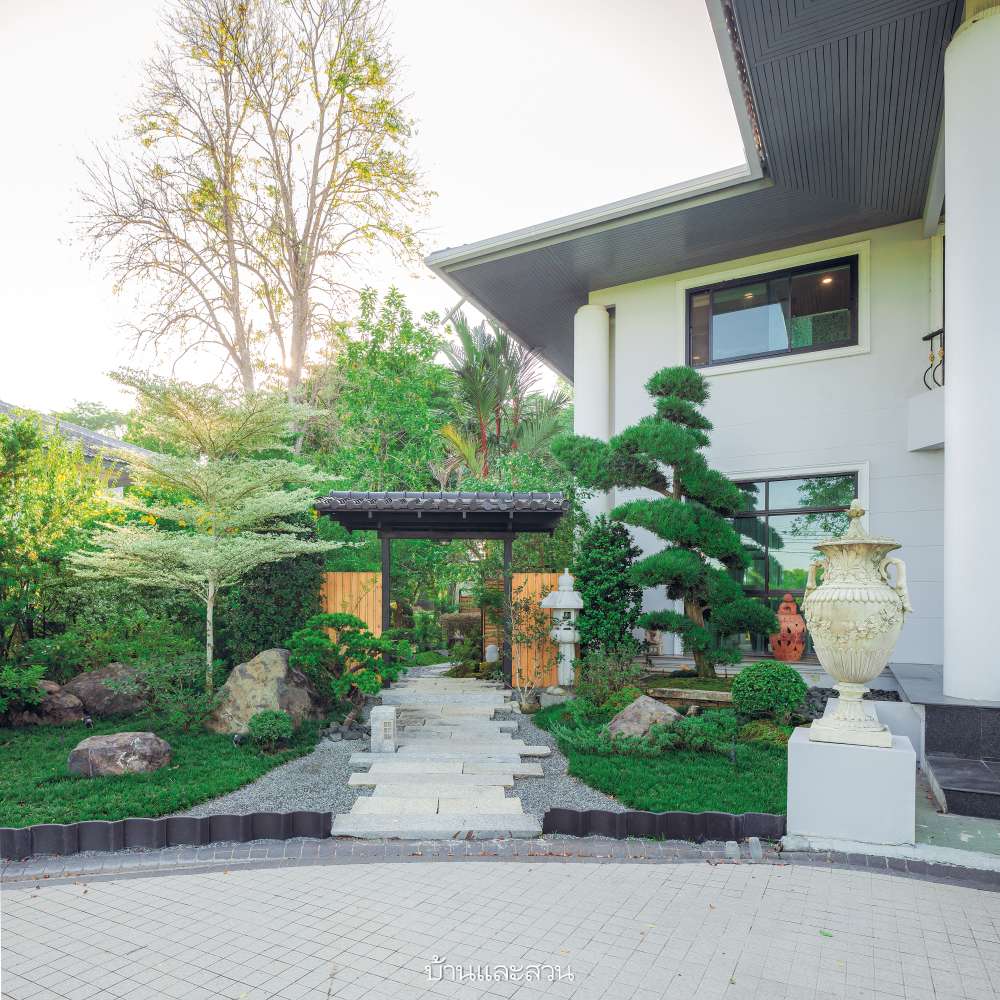
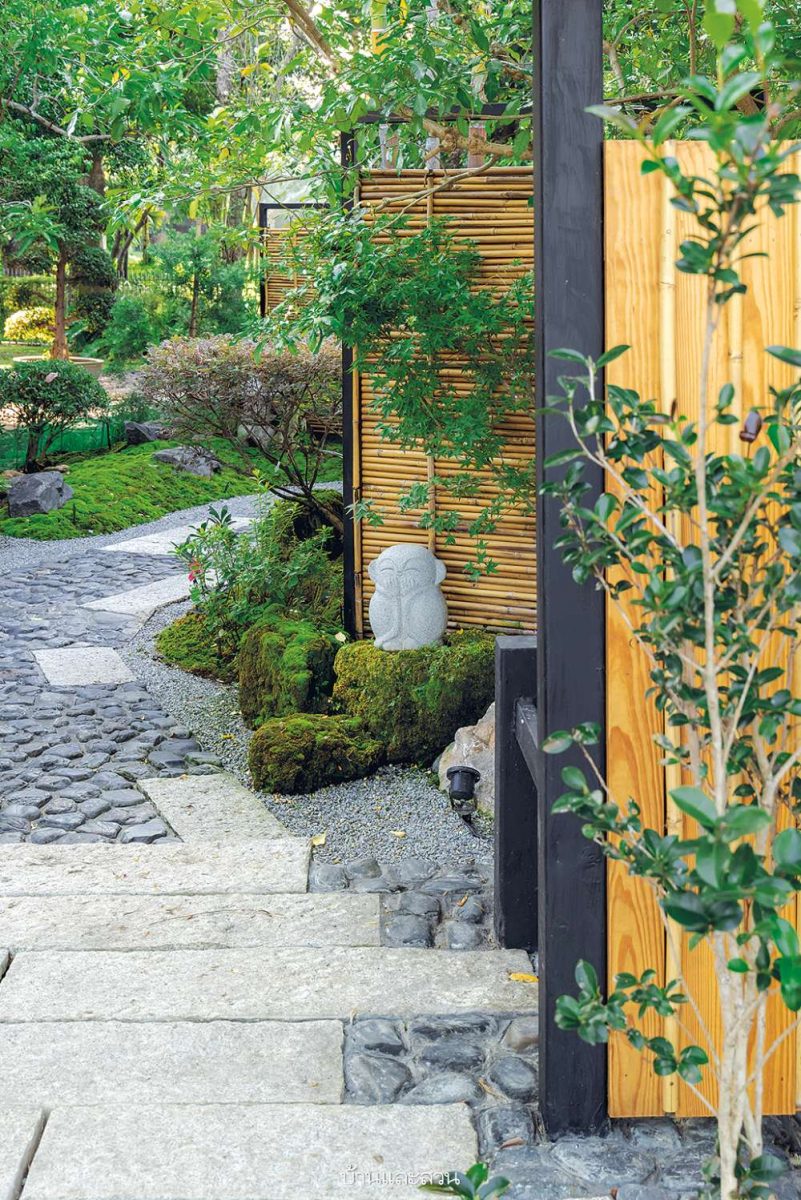
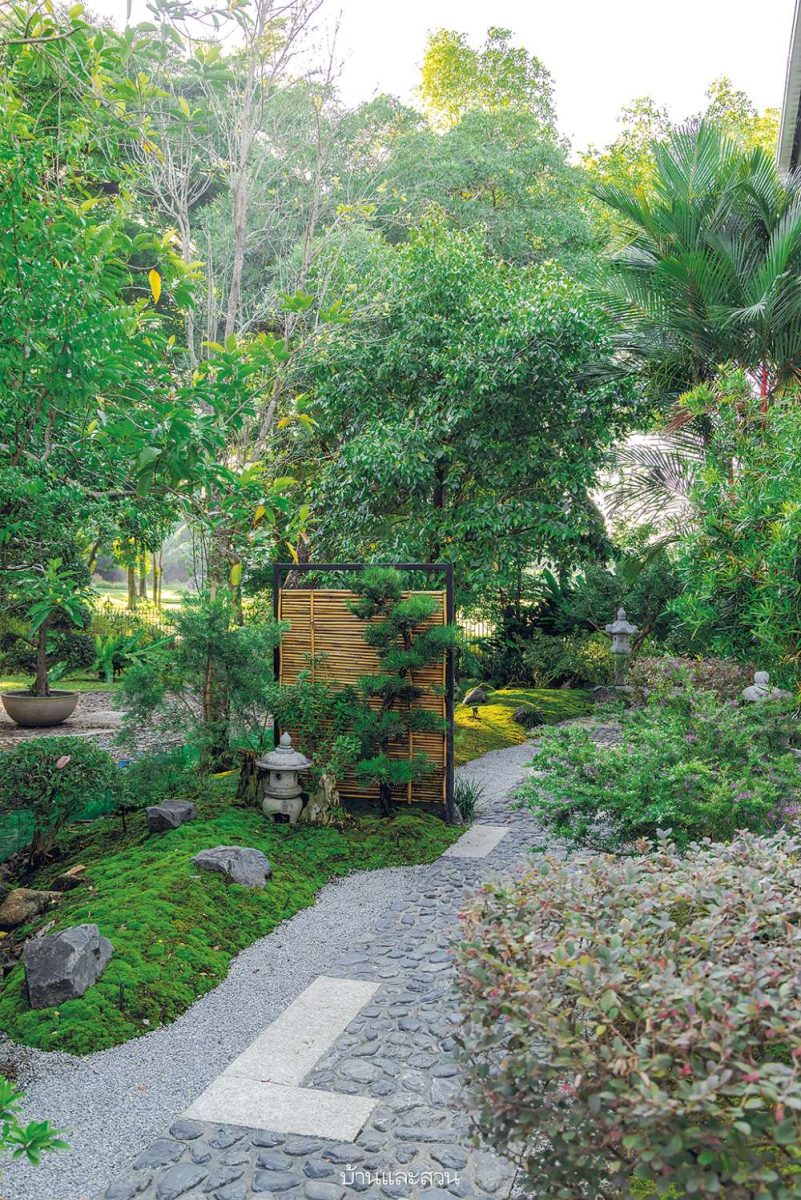
This garden is the craftsmanship of designing and landscaping. Mr. Puri-Puriwat Warakitiyawirotakul of Wabisabi Spirit tells about the beginning of gardening. “Khun Tod greeted me at my shop page. to consult about the garden After talking to each other, I know that I like to raise carp as well. So talk to the neck It’s easier to understand what’s right. I went to look at the garden at Mr. Tod’s house. which was originally a Japanese garden But it is not quite true to the traditional Japanese garden. Also, the garden is starting to wear out. So Khun Tod wanted to renovate the whole garden.
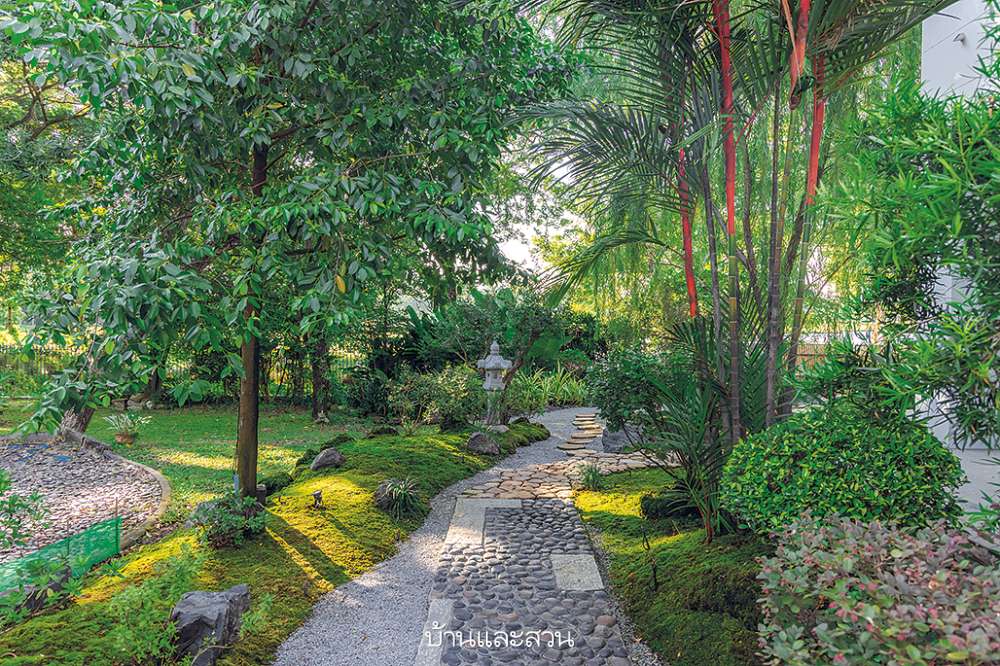
“My design work probably didn’t start at what do customers want But to begin with, I have more. I have quite a few items that I need for a Japanese garden that I have ordered. I have been searching and collecting plants in our house from all over the region that are similar to the ones we need. without having to order imported from Japan When I talk to customers, I know what they like, what they want, and what I have to use. Therefore, it will gradually design for customers to get the garden that will match what they want.
“Khun Tod gives you complete freedom of design and sends you what you like. Starting from the front door I used the arch of a house in Japan to use. I want to convey a welcome home The floor is laid out with smooth granite slabs that are easy to walk in. It is an ancient granite slab that is hundreds of years old. imported from Japan through the tracks of the wagon The cow’s footsteps have arrived. Thus, it has a smooth and shiny surface. which we do not have in our house The rest is sprinkled with our home’s river rocks. Pine, a large bonsai-shaped pine, over 60 years old, is the original tree that already exists. Decorated with stone lanterns, ornamental stones and jizo-san dolls. (God protects children)
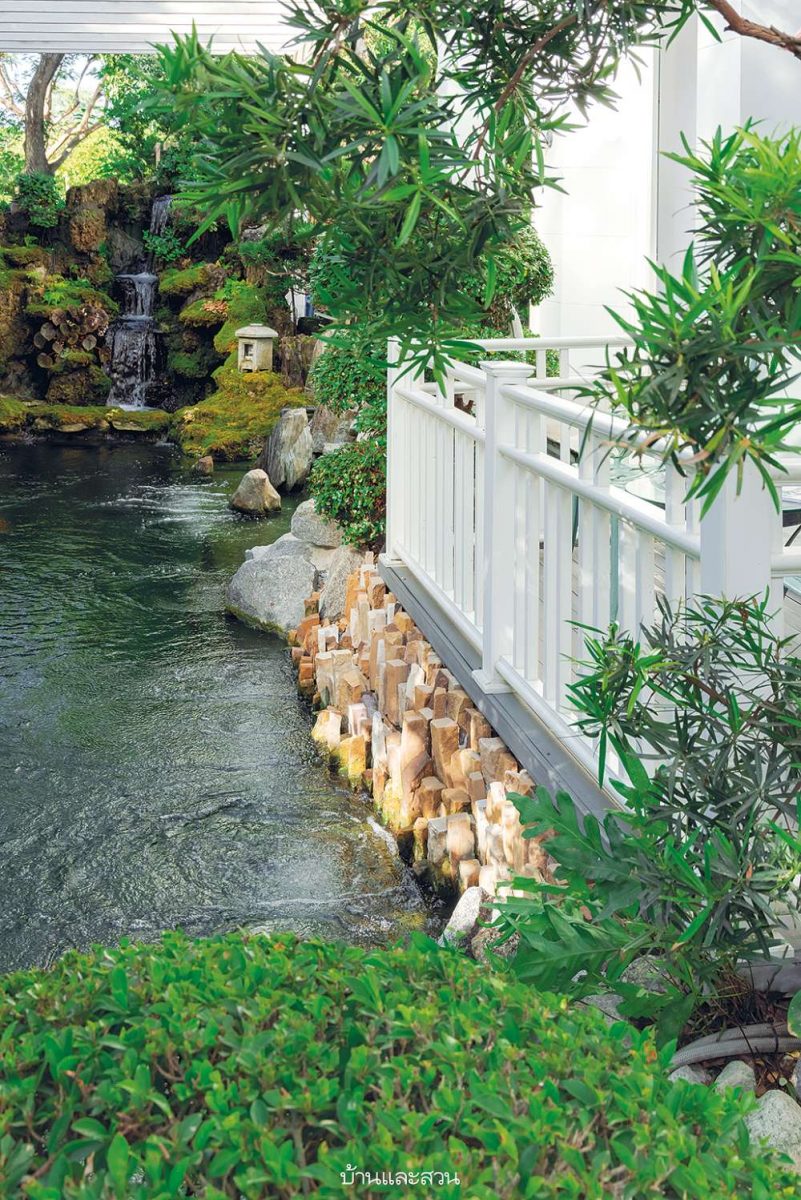
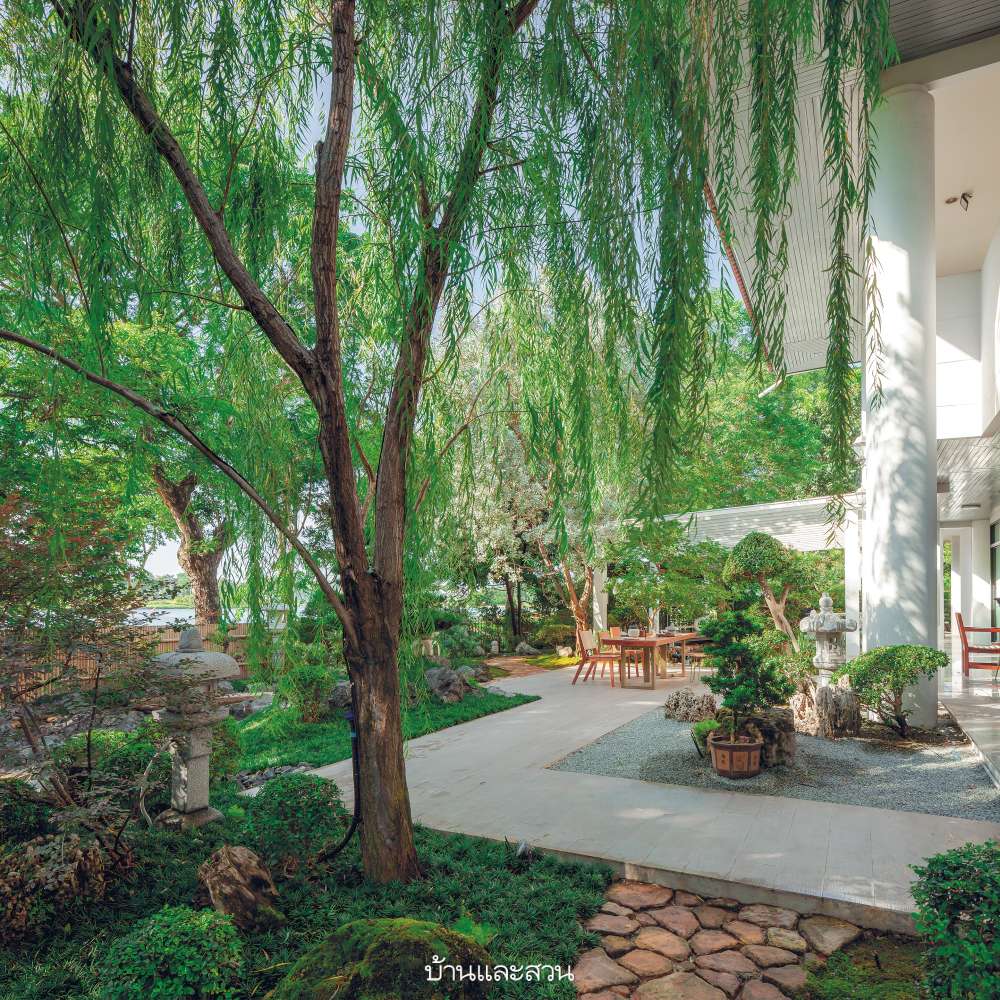
“The walkway in the garden is another feature that is intended to be used to tell stories in the garden. Next to the entrance is a corridor called ‘Nobedan’, which can be seen in Japanese palaces or temples. Lay ancient granite slabs and river pebbles in the ancient textbook stone laying pattern. It looks like a walkway that stretches in a straight line. Emphasis on easy walking and brisk walking. Both sides of the road will tell the story of the mountain garden. There are moss hills lined with rocks that assume that they are mountains. But with the long corridors, it can be boring. Therefore, we had to make a bamboo screen decorated with trees to block it up. to attract attention along the way before the mood of the walker falls to the end of the park too quickly
“Passed through Nobedan corridor. will change the form of a new corridor called ‘Arare Koposhi’ uses sand stones that are polished and chamfered and laid out in a free form. I arranged the stones in a pattern called ‘Mushigui’ (meaning leaf-eating insects). The stones have a curved shape at the edges, like a leaf that has been gnawed by insects. This is a traditional walkway as well. At the end of the garden is a ‘Tobiichi’ walkway, which is mostly used in tea gardens. Put round sandstone sheets in a row to form a walkway that forces you to slow down because you have to carefully take one step at a time. allowing walkers to enjoy the beauty of both sides of the road while walking

“After passing through the Tobiichi corridor, you will find a rock garden or dry garden called ‘Karezansui’. It is an imaginary garden that we often see in temples or palaces in Japan. It is a simulation of the sea and mountains in nature but in a smaller size. The placement of stones and patterns of rake into a pattern on the gravel and sand have different meanings according to the ancient texts. I opted for the old granite. including the ancient stone bridges that were imported Decorate it with a few plants so that it doesn’t look too dry. At the very end is a large carp pond and a viewing house that hides a filter system under the deck. which is the original item that
already exists. There is a natural garden in the innermost corner. I just add trees around the waterfall to make it look more shady. and decorate the edge of the fish pond to be more beautiful and attractive
“Khun Tod’s house already has some big trees. We’ve only added eye-level plants, ornamental plants, ruffles, and mulch. Usually, the trees used in the Japanese garden are trees that have a pattern and form. I choose trees in our home instead, for example, Samet Daeng is used instead of red pine. Kaew Chao Chom four leaves instead of maple. Chum Saeng instead of a pine tree with a kinked stalk. which is commonly used in Japan Trees chosen in Japanese gardens should have small leaves, glossy leaves, and somewhat kinked branches. except that it is the original one that existed before The plant that should be chosen must have smooth bark, not cracked, oily skin, such as Sela Inthanin. When blooming, it has a pink color that can give you a feeling of cherry blossoms.”

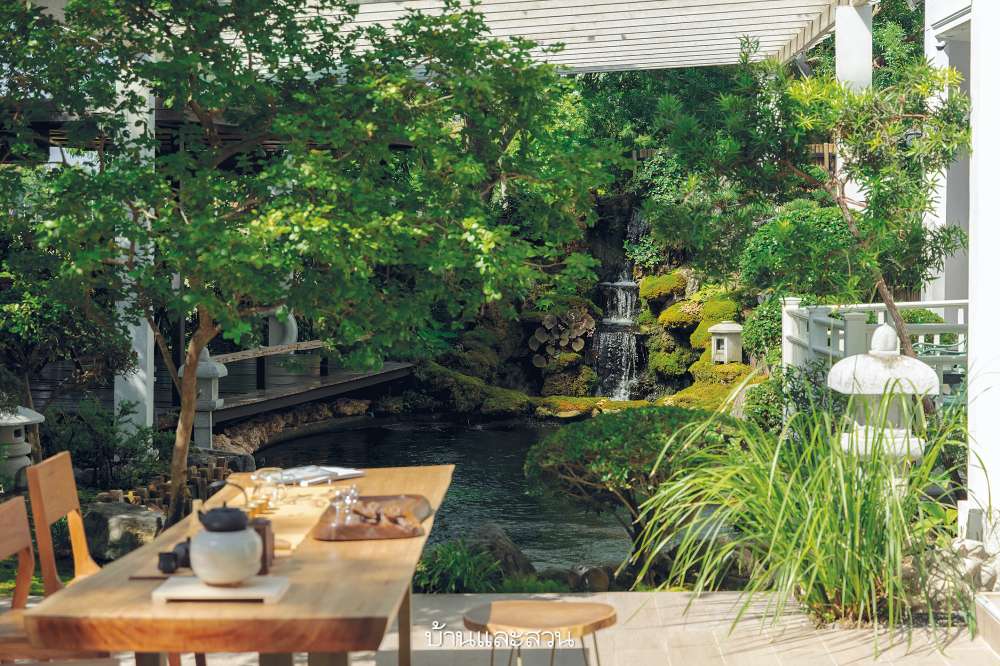
In addition to the beautiful traditional Japanese garden that hides many meanings. There is also a large carp pond that Tod loves and places no less importance on them. Including the story of the fish pond and the filter system for the fish pond is interesting. Readers can follow and read more in the book Fish Pond in the Beautiful Garden of Baan Lae Suan Publishing House.
Home and Garden Magazine Year 2021 No. 544
Owner : Mr. Pongsin Prukmat
Designed : Wabisabi Spirit by Khun Puriwat Warakitiyawirotakul Tel. 08-1133-9596
Story : Wachiraphong Huanbutta
Pictured: Supakorn Srisakul




